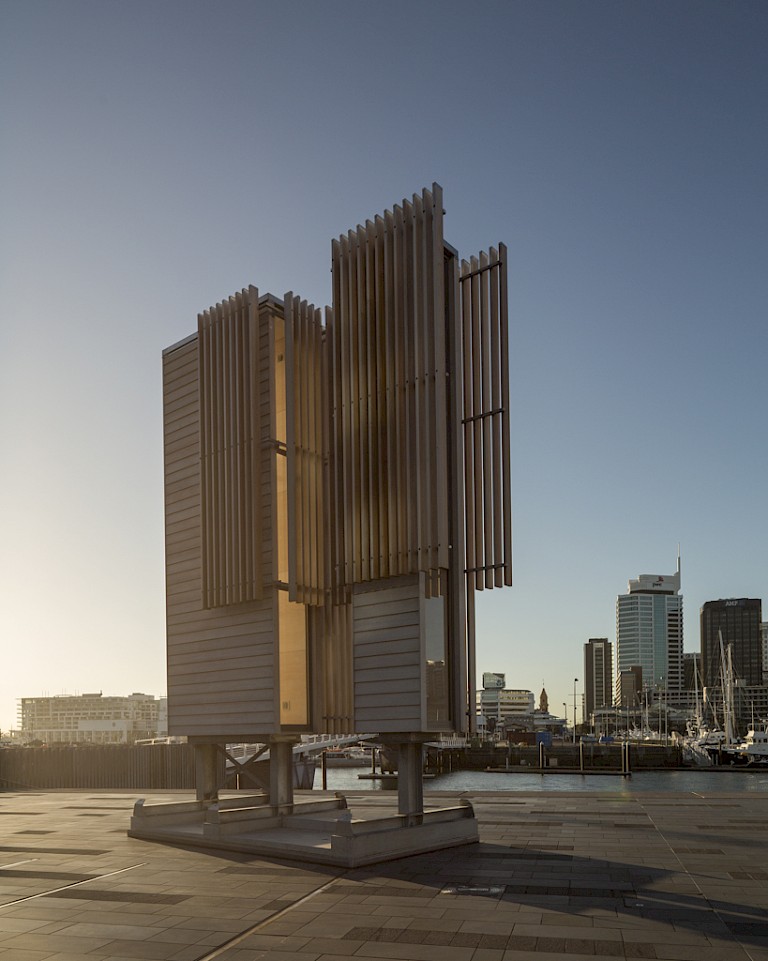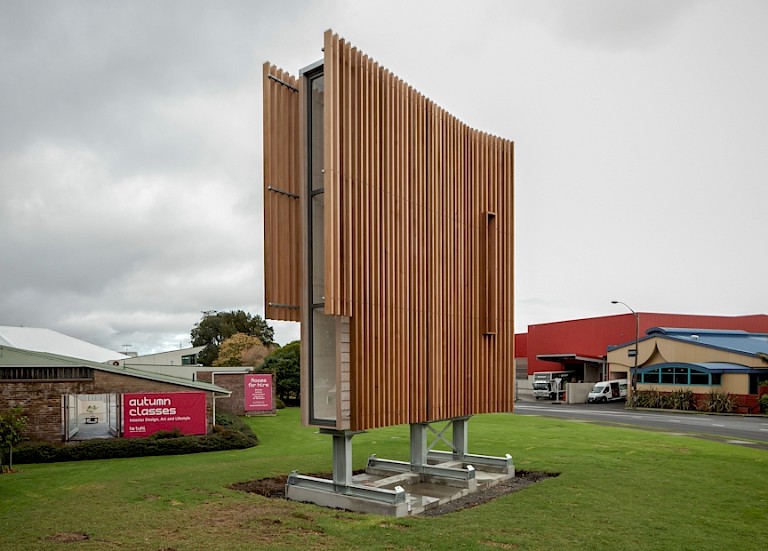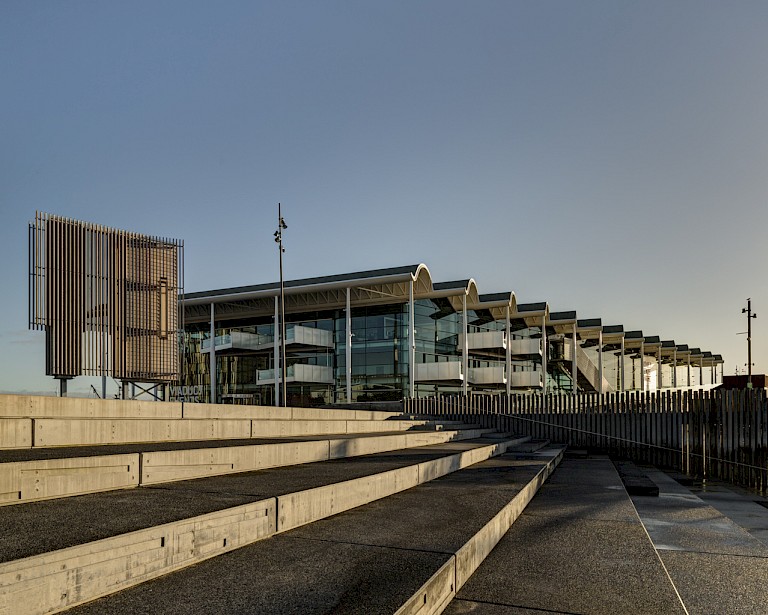



Landshaft offers the viewer an estranged sense of encountering something familiar yet threatening, something at the edge of the knowable. The sculpture disrupts our material and experiential coherence of the built environment so that the complex socio-political and economic ideologies of its making might be questioned. The work’s architectural ambiguity directs a range of uncertain spatial and bodily relationships, something increased by the materials used: concrete, galvanised steel, glass, timber, and cigarettes. Inside the structure pairs of cigarettes were perplexingly inserted into the interior cladding as if its membranes were permiable and its vices human.
Landshaft was installed in two vastly different sites over a two year period – first outside Te Tuhi art gallery in a semi-commercial and residential suburb, and then at Karanga Plaza, part of Auckland's recently developed downtown waterfront – both sites zoned for future high-rise residential and commercial development to help future proof the city’s needs. The sculpture gained an unexpected political edge when viewers began linking it to the city’s devleoping housing crisis. Installed for approximately 3 months in each location, one passerby wondered if it was a ‘show home’ of new appartments to be built in the waterfront area, outraged at the minimal space and conditions that developers had sunk to.
While many responses to the work were based around the dislocating of self and connection to domestic objects, Landshaft was a strongly architectural piece that continues the artist’s practice of highly crafted architectural forms that comment on the psychology of the built environment. The work references Scandavaian modernism and the history of sculptural forms created by by artists such as Bruce Nauman, Richard Serra, Dan Graham, Andrea Zittel and Atelier Van Lieshout, Landshaft. The deliberate sense of unease with which Landshaft taunts our familiarity with the built environment is compounded by its contemporary construction. The sculpture was intentionally designed by the artist as a kitset construction, allowing it to be re-situated in new spatial contexts. like Mies van der Rohe’s 1929 Barcelona Pavilion, Landshaft is destined to dematerialise before it can ever be domesticated.
The sculpture is an investigation into the psychology of the built environment and the socio-political forces that shape urban life. Landshaft offers the viewer an estranged sense of encountering something familiar yet threatening, something at the edge of the knowable. The sculpture disrupts our material and experiential coherence of the built environment so that the complex socio-political and economic ideologies of its making might be questioned.
The project was initiated by the artists after securing substantial financial support from University research funding. The work was subsequently facilitated in collaboration with Te Tuhi a contemporary art project space located in Auckland New Zealand. On the Auckland Waterfront Landshaft was a Te Tuhi offsite project realised with the support of Auckland Waterfront Development Agency.
All copyright belongs to Shanghai Academy of Fine Arts, Shanghai University.



